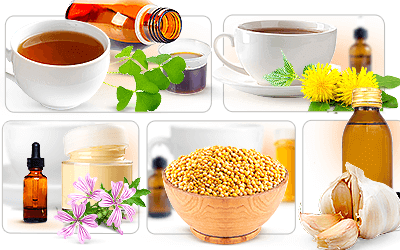Mallow, or Malva sylvestris, is a perennial herb believed to originate from Europe and Asia. It now grows all over the world to the point where it is considered a weed because of the ease in which it grows wild. Its traditional use was at first limited to inducing childbirth and promoting fertility, although during the 16th century, mallow developed a reputation as a cure-all herb. As such, it began to be used to treat stomach and bladder illnesses as well as wounds.
Mallow Medicinal Properties
- Medicinal action Anti-inflammatory, Astringent
- Key constituents Mucilage, anthocynins, tannins
- Ways to use Hot infusions/tisanes, Tincture
- Medicinal rating (2) Minorly useful plant
- Safety ranking Safe
Health Benefits of Mallow
Mallow has found several medicinal uses since its discovery, making it a useful plant for healing various ailments. Mallow's health benefits have lead to several traditional applications, mainly:
Reducing swelling and pain. Mallow possesses demulcent and anti-inflammatory properties that have been traditionally used for relieving skin inflammations as well as for soothing throat and mouth infections.
Speeding wound healing. Due to its astringent properties, topical mallow application is useful for preventing infections and quickening recovery from cuts and wounds.
Additionally, mallow has been used for its laxative and diuretic effects.
How It Works
The main ingredients to thank for mallow's medicinal properties are mucilage, anthocyanins, and tannins. Malvin, an anthocyanin contained in mallow, provides antioxidant and anti-inflammatory effects.1
The tannins in mallow are responsible for the astringent action, which helps clean wounds and protect the skin from infections.2,3
Mallow is helpful for cleansing wounds, soothing insect bites, and reducing swelling. It is also a diuretic and laxative. The mucilage in mallow helps treat mucosal irritations of the mouth and throat that cause dry cough. It acts as a demulcent, forming a protective film over inflamed mucous membranes.4
How to Consume Mallow
- Edible parts Flowers, Leaves
- Edible uses Beverage
- Taste Sweet
Different parts of the mallow plant can be consumed in a number of ways, depending on taste preferences and the desired therapeutic effect.
Mallow leaves and flowers can be distilled to make liquor. Young mallow leaves can be boiled or eaten raw in salads. Mallow leaves are also added to soups for their thickening effects and pleasant taste. Additionally, raw mallow seeds can be eaten as a healthy snack, offering a nutty flavor.
Natural Forms
Infusion. The flowers and leaves can be brewed and taken orally for soothing a sore throat as well as gargled to treat mouth infections. This preparation can also be used topically for disinfecting wounds and reducing skin inflammation.
Poultice. Mallow leaves, previously soaked in warm water, can be applied directly over irritated skin or wounds to soothe and speed up healing.
Herbal Remedies & Supplements
Tincture. This is an alcohol-based preparation that needs to be diluted in water before taking it as a mild laxative or for soothing irritations in mouth and throat.
Ointment. This preparation of mallow can be applied over the skin in order to soothe rashes and eczema.
Capsules. The anti-inflammatory properties of mallow are concentrated in this supplemental form that offers standardized, fixed doses that can be taken orally for the relief sore throat and respiratory problems, such as cough.
Growing
- Life cycle Perennial
- Harvested parts Flowers, Leaves
- Light requirements Full sun, Partial shade
- Soil pH 6.6 – 7.3 (Neutral), 7.4 – 7.8 (Slightly alkaline)
- Growing habitat Cool temperate regions, Temperate climates
Mallow is a hardy perennial that commonly grows in the wild, such as in open areas, roadsides, and wastelands. However, this fast-growing, low-maintenance herb can be easily grown at home and it is a popular garden ornamental. The mallow plant can grow up to 4.9 feet (1.5 m) and spread across 1.6-3.3 feet (0.5-1 m)
Growing Guidelines
The best season for sowing mallow seeds is summer. If it is planted indoors, it should not be transplanted until after the last frost.
The plants should be spaced 12 - 36 inches (30 - 90 cm) apart, depending on the size of the variety.
The mallow plant prefers light, well-drained soil or peat moss with an approximate pH of 7.0.
The mallow herb can grow in either full sun or partial shade and requires moderate watering.
Additional Information
- Other uses Textiles, Paper, Dye
Plant Biology
Mallow is a tall, perennial herb with a pulpy taproot and erect stem. It can grow up to 3-4.9 feet (1-1.5 m) in height and boasts beautiful pinkish-purple flowers with prominent, dark veins and lobed leaves.
Classification
Mallow (Malva sylvestris) is a member of the Malvaceae family, which contains 2,300 species spread over 200 genera. This large botanical group contains some economically important and well-known herbs, such as hibiscus, hollyhock, marsh mallow, cola nut, and cacao.
Subspecies and Cultivars of Mallow
Nowadays, botanists do not classify Malva sylvestris into distinct subspecies, but prefer to speak of cultivar groups instead.
The subspecies formerly known as Malva sylvestris subsp. malaca is now referred to as the Malva sylvestris L. Mauritiana cultivar group, and it is the predominant type found in the Iberian Peninsula, Italy, and Algeria.
The Canescens group hails from further up north (France - Montpelier region), and unlike Mauritiana, it is almost completely covered by fine, white hair. Meanwhile, the M. sylvestris L. Eriocarpa group grows mostly between the Himalayas and Central China and can be identified because only its seeds and stems are hairy.
Historical Information
According to archaeological findings, the first use of mallow was nutritional rather than therapeutic. Evidence points out that young mallow leaves were consumed by humans around the 8th century BCE, possibly due to their pleasant, sweet taste and nutritional value. Sometimes, mallow is given to children to ease teething. Today, mallow is mainly used for medicinal and culinary purposes as well as an ornamental garden plant because of its pretty pinkish-purple flowers.
Economic Data
Mallow is technically considered a weed that grows wild on nearly all continents, so there is no substantial information about its economic value. The biggest industries for mallow, however, are medicinal and culinary. Mallow is often used as a therapeutic herb taken for several ailments or consumed in various soups and salads.
Other Uses of Mallow
Dye. The tannins found in mallow make it useful for dyeing clothes.
Fiber. Furthermore, the fibers found in mallow stems can be used for making textiles and paper.
Decoration. Traditionally, mallow has been woven into garlands for celebrating May Day.
Sources
- Backyard Medicine, pp. 93 -5
- Encyclopedia of Herbal Medicine, p. 231
- Medicinal Plants of the World, page 197
- The Herb Book, pp. 255-6
Footnotes:
- Molecules. (2017). Anti-Inflammatory Effect of Malva sylvestris, Sida cordifolia, and Pelargonium graveolens Is Related to Inhibition of Prostanoid Production. Retrieved May 23, 2022 from: https://pubmed.ncbi.nlm.nih.gov/29099738/
- Iranian Journal of Basic Medical Sciences. (2015). Evaluation of cutaneous wound healing activity of Malva sylvestris aqueous extract in BALB/c mice. Retrieved May 23, 2022 from: https://www.ncbi.nlm.nih.gov/pmc/articles/PMC4509959/
- Acta Poloniae Pharmaceutica. (2010). Wound healing activity of Malva sylvestris and Punica granatum in alloxan-induced diabetic rats. Retrieved May 23, 2022 from: https://pubmed.ncbi.nlm.nih.gov/20873419/
- Electronic Physician. (2015). Preventive effect of Malva on urinary toxicity after radiation therapy in prostate cancer patients: A multi-centric, double-blind, randomized clinical trial. Retrieved May 23, 2022 https://www.ncbi.nlm.nih.gov/pmc/articles/PMC4590556/






